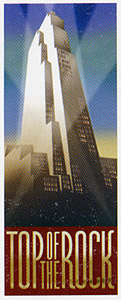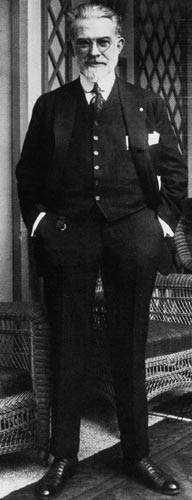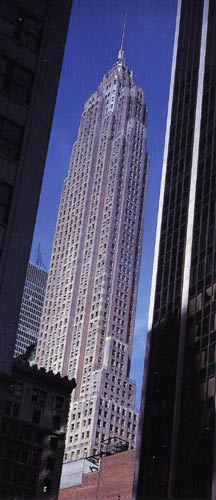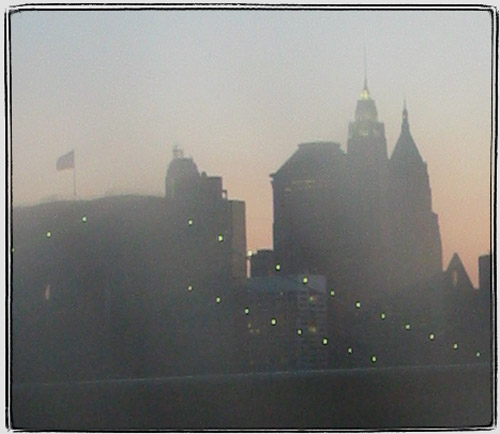There’s one thing that I hate about Chrysler Building. It does not have a public observation deck. I feel that any major skyscraper needs to have two things at the top: a restaurant and an observation deck.
To the owners the public areas at the top are usually a pain in the ass and rarely pay for themselves. Having a lot of people from the street come up to the very top of the building, adding to the overall traffic is not fun for building management from the security standpoint. I remember reading about the co-op board of a posh building at 30 Central Park South trying to evict Nirvana, a top floor Indian restaurant with amazing views of Central Park. They complained about the traffic and the cooking smells.
Because of this most buildings that used to have observation decks and restaurants closed them. Over a the Tishman Building Top of the Sixes turned into an exclusive cigar club. At the City Services Building the public observation deck, which was actually planned as the owner’s penthouse, was turned into a closed lounge for AIG brass. An at the Chrysler Building, the observation deck became Schrafft’s Restaurant, then it morphed into posh and private Cloud Club, and then closed altogether.
When I was younger, I was not particularly attracted to the views from high vantage points. But for some reason at the turn of the Millennium found me deeply fascinated with skyscrapers and views from them. To this day I can’t forgive myself not visiting the observation deck at WTC. I probably did not have enough money to eat at the perished Windows on the World, but not visiting Top of the World still fills me with remorse.
Because of this upsetting tendency of restriction and destruction public spaces high in the skies, I find this very joyous news: the rocket-like 30 Rockefeller Plaza will be opening an observation deck to the public. It’s going to be called “Top of the Rock.”
Rockefeller Center has an interesting distinction of being one of the very few Rockefeller family projects that carry their name (the other big one being Rockefeller University). Most people also think that it’s built and named after John D. Senior, the Mr. Burns prototype and semi-crazy hander outer of nickels, when in fact, it was the mellow John D. Junior who built it.
Since the Rockefeller name is not that popular, it’s common to see “Rockefeller Center” to be shortened to sexier “Rock Center”, as for example the menu of Yummy Sushi contains several sushi combos named Rock X, where X is a number of the combo.
As much as I tried, I could not find out a more definite date than “sometime this fall”, but one of the free booklets that you can get in the lobby of the GE (former RCA) building has a little blurb and the logo. I like the logo. It’s all Art Deco-ey.




